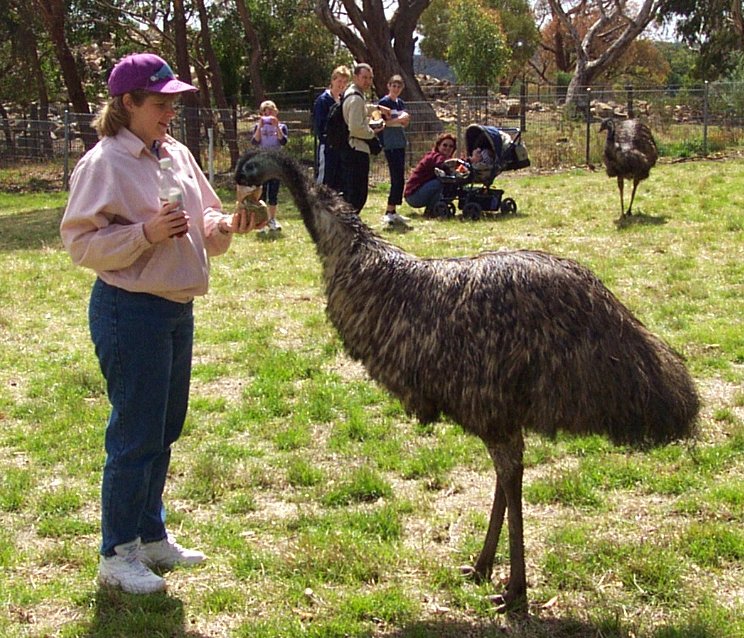 Emu Bird
Emu Bird Emu Bird
Emu Bird Emu Bird
Emu Bird Emu Bird
Emu Bird Emu Bird
Emu Bird The Emu is the largest bird native to Australia and the only extant member of the genus Dromaius. It is also the second-largest extant bird in the world by height, after its ratite relative, the ostrich. There are three extant subspecies of Emus in Australia. The Emu is common over most of mainland Australia, although it avoids heavily populated areas, dense forest, and arid areas.
The Emu is the largest bird native to Australia and the only extant member of the genus Dromaius. It is also the second-largest extant bird in the world by height, after its ratite relative, the ostrich. There are three extant subspecies of Emus in Australia. The Emu is common over most of mainland Australia, although it avoids heavily populated areas, dense forest, and arid areas.The soft-feathered, brown, flightless birds reach up to 2 metres (6.6 ft) in height. They have long thin necks and legs. Emus can travel great distances at a fast, economical trot and, if necessary, can sprint at 50 km/h (31 mph) for some distance at a time. Their long legs allow them to take strides of up to 275 centimetres (9.02 ft) They are opportunistically nomadic and may travel long distances to find food; they feed on a variety of plants and insects, but have been known to go weeks without food. They also ingest stones, glass shards and bits of metal that help squash food in the digestive system. They drink infrequently, often once every day or two, and ingest copious fluids when the opportunity arises. Emus will sit in water and are also able to swim. They are curious and nosy animals who are known to follow and watch other animals and humans. Emus do not sleep continuously at night but in several short stints sitting down.
Emus have a nail on their toes, akin to a knife, which is used in kicking away predators and opponent Emus. Their legs are among the strongest of any animals, allowing them to rip metal wire fences. They are endowed with good eyesight and hearing, which allows them to detect predators in the vicinity. The plumage on an eye varies regionally, matching the surrounding environment and improving its camouflage. The feathers allow the Emu to prevent heat from flowing into the skin, permitting it to be active during the midday heat. They can tolerate a wide range of temperatures and thermoregulate effectively. Males and females are hard to distinguish visually, but can be differentiated by the types of loud sounds they emit by manipulating an inflatable neck sac. Emus breed in May and June and are not monogamous; fighting among females for a mate is common. Females can mate several times and lay several batches of eggs in one season. The animals put on weight before the breeding season, and the male does most of the incubation, losing significant weight during this time as he does not eat. The eggs hatch after around eight weeks, and the young are nurtured by their fathers. They reach full size after around six months, but can remain with their family until the next breeding season half a year later. Emus can live between 10 and 20 years in the wild and are predated by dingos, eagles and hawks. They can jump and kick to avoid dingos, but against eagles and hawks, they can only try to run and swerve.
The Tasmanian Emu subspecies that previously inhabited Tasmania became extinct after the European settlement of Australia in 1788; and the distribution of the mainland subspecies has been influenced by human activities. Once common on the east coast, Emu are now uncommon; by contrast, the development of agriculture and the provision of water for stock in the interior of the continent have increased the range of the Emu in arid regions, and it is neither endangered nor vulnerable. They were a food and fuel source for indigenous Australians and early European settlers. Emus are farmed for their meat, oil, and leather. Emu is a lean meat and while it is often claimed by marketers that the oil has anti-inflammatory and anti-oxidative effects, this has not been scientifically verified in humans. The Emu is an important cultural icon of Australia. It appears on the coat of arms, various coins, features prominently in Indigenous Australian mythology, and hundreds of places are named after the bird.











0 comments:
Post a Comment